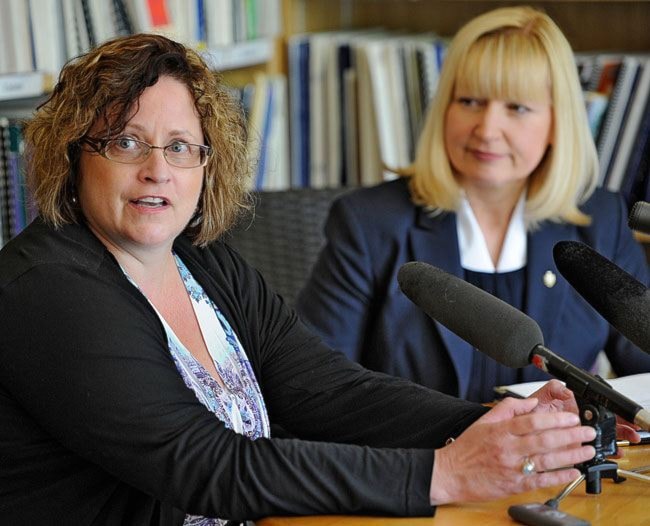Finding a place to live in Whitehorse is tough, but for women and children escaping violence the housing challenge can be really severe.
“The shortage of safe, affordable housing is certainly one of the biggest barriers to the safety of women and children in Yukon,” said Barbara McInerney. She’s the executive director of the Yukon Women’s Transition Home Society, which operates Whitehorse’s women’s shelter, Kaushee’s Place.
But there’s some good news on the horizon.
Betty’s Haven, a new 10-unit supportive housing facility, is set to begin construction this summer, thanks to a $4.5-million contribution from the Yukon government.
“It’s certainly a good investment for all Yukoners,” said Elaine Taylor, the minister responsible for the women’s directorate, at a news conference Monday. “We have been working together on this initiative for some time, and I’m pleased to see it come to fruition.”
The $4.5 million includes $1 million committed by the territory last summer.
“This important infrastructure will contribute most importantly toward the health and safety of families and even our community,” said Taylor. “Today’s announcement marks a very significant milestone that will help women achieve long-term independence for themselves, their families, and the betterment of our territory.”
The four-storey apartment building is named in honour of Betty Sjodin. After almost three decades of service, she retired from Yukon Women’s Transition Home Society last year.
The new facility is designed to provide a temporary home for battered women and their children.
It will include three floors of residential housing, with several one-, two- and three-bedroom units. The first floor will be used as office space for the society, which will own the building.
Having that extra space will allow the organization to offer workshops and other programming for their clients, said McInerney.
“We’re pretty much on top of each other where we are,” she said. “Right now we run so full that we don’t have any meeting space. We don’t run any groups.
“We’re just really too busy, just running the crisis environment.”
Residents of the building will be able to stay for up to 18 months, while they look for a permanent home.
Kaushee’s Place already offers five such units. But most of the beds offered by the shelter are only available to women for 30 days.
When McInerney first started in her position 12 years ago, finding a place to live was relatively easy, and a 30-day stay at the shelter was the norm.
“Women could come in and have maybe a week to kind of chill and heal and just kind of strategize with what they wanted to do,” she said. “In the next three weeks it was quite an attainable thing to be able to finds a house and move out.”
Today, that’s not the case.
With housing in such short supply, even with six months it can be a challenge, said McInerney.
“When women enter the transition home we are supporting them, including in applications for social housing, but sometimes that takes a bit of time,” she said. “Especially for single women, it seems to take them a bit longer to find housing in the social market.”
Demographics are also creating a challenge.
“We are seeing more older women come into the transition home that have more issues to work through,” said McInerney.
“Transitional housing is supposed to help women get through those dangerous and difficult parts of their life, and we just can’t realistically get through that transition in 30 days or even six months.”
Funding for the operation and maintenance of the building will come from the Department of Health and Social Services.
That extra money will also pay for three staff to operate the facility: a project manager to look after the building, a part-time program co-ordinator to look after programming, and a childcare worker.
“I think it’s going to give our programming a lot of ability to adapt and change,” said McInerney.
It will still take more than a year to complete the project. Right now, it’s still in the “schematic design phase.” Some preliminary construction work is set to start this summer, but the building isn’t scheduled to be completed until the fall of 2013.
Contact Josh Kerr at
joshk@yukon-news.com
